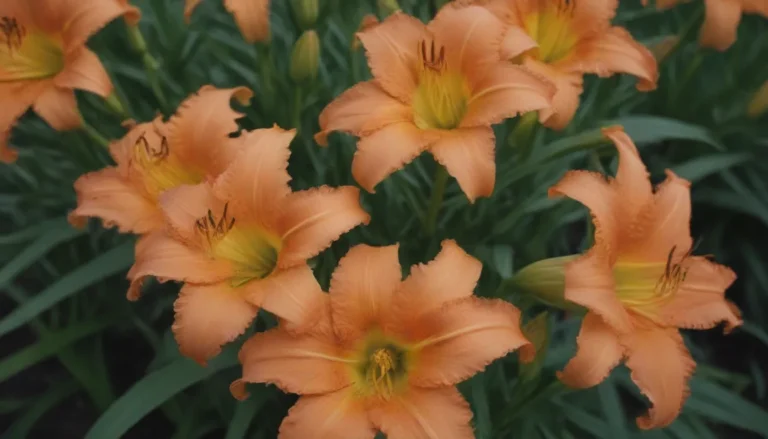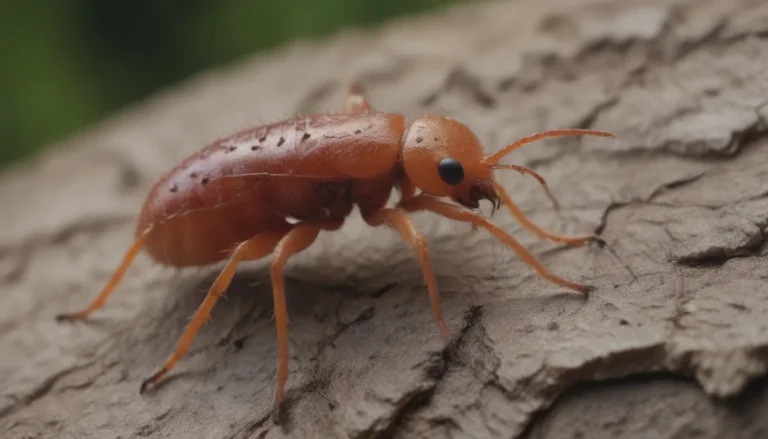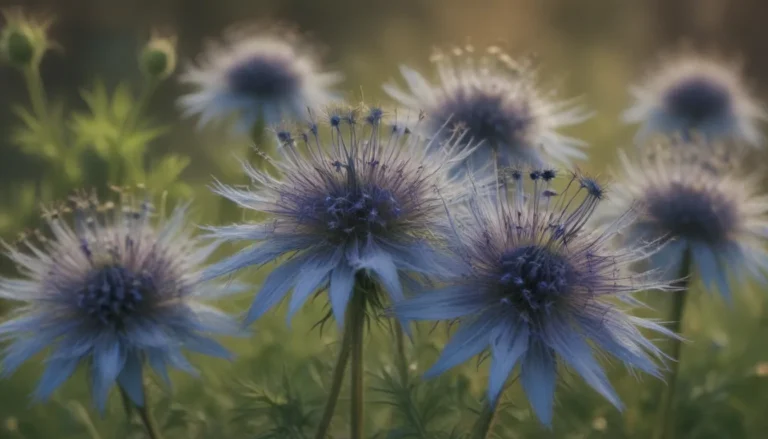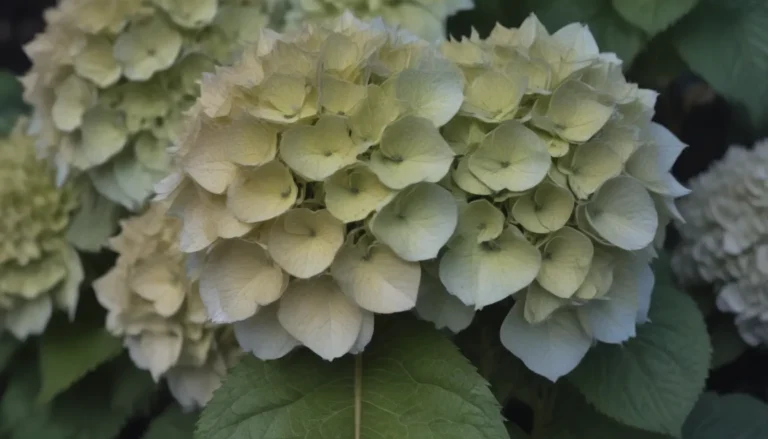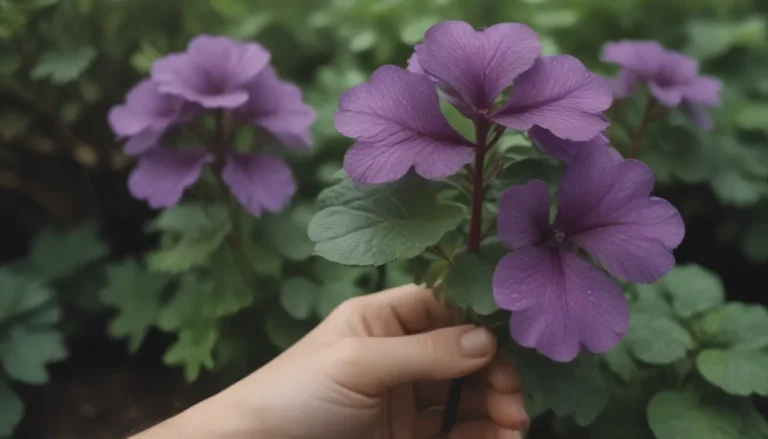All About Shade-Loving Shrubs: 30 Best Options for Your Yard
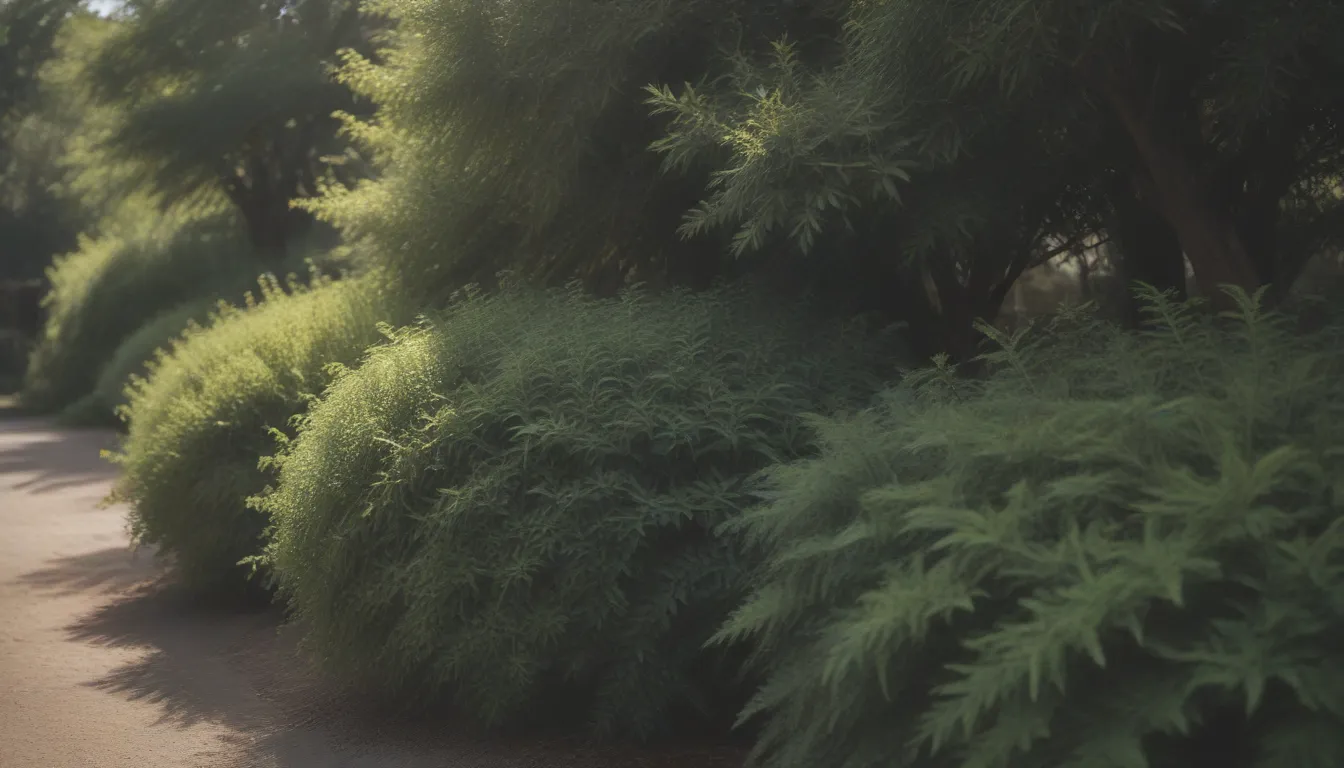
Are you looking to add some color and life to the shady areas of your yard? It can be a challenge to find plants that thrive in the shade, but fear not! There are plenty of options available to brighten up those canopy-covered spots. Shade-loving shrubs come in all shapes and sizes, from short bushes to tall hedges, and they can be either evergreen or deciduous. Some of these shrubs boast beautiful blossoms, while others are known for their stunning foliage. Many of them offer year-round appeal and require minimal maintenance, making them perfect for those shady yards where sun-loving plants struggle to thrive.
In this comprehensive guide, we will explore 30 of the best shrubs for shade that will enhance the beauty of your lawn and garden. Whether you are a seasoned gardener or a beginner looking to add some greenery to your outdoor space, these shade-loving shrubs are sure to impress.
The Best Shrubs for Shade
1. Azalea and Rhododendron (Rhododendron)
- Best for: Adding vibrant spring blooms to your garden
- USDA Growing Zones: Varies depending on the species
- Mature Size: Ranges from compact bushes to large shrubs
- Color Varieties: An array of brilliant shades
- Sun Exposure: Full to dappled shade
- Soil Needs: Acidic soil; fertilize with an acid-enhanced fertilizer in late winter or early spring
Azaleas and rhododendrons are classic choices for shade-loving shrubs, with their stunning spring blooms in various colors. These woody shrubs thrive in shady environments and can add a pop of color to your landscape.
2. Common Boxwood (Buxus sempervirens)
- Best for: Formal landscape design, hedges, and topiaries
- USDA Growing Zones: 5-8
- Mature Size: Up to three feet tall
- Color Varieties: Light-green leaves
- Sun Exposure: Partial shade
- Soil Needs: Well-draining soil
Common boxwood is a versatile evergreen shrub that adapts well to partial shade. Its dense foliage and compact shape make it a popular choice for formal gardens and hedges.
3. Climbing Hydrangea (Hydrangea anomala subsp. petiolaris)
- Best for: Vines that can be maintained as a shrub
- USDA Growing Zones: 5-8
- Mature Size: Varies depending on growing conditions
- Color Varieties: White flowers
- Sun Exposure: Partial shade
- Soil Needs: Well-draining soil
Climbing hydrangeas are deciduous vines that can be pruned to maintain a shrub-like appearance. They thrive in shaded areas but produce better flowering displays with some sunlight exposure.
4. Mountain Laurel (Kalmia latifolia)
- Best for: Native plant in eastern North America
- USDA Growing Zones: 4-9
- Mature Size: Varies depending on the cultivar
- Color Varieties: Vibrant flowers
- Sun Exposure: Partial to full shade
- Soil Needs: Acidic soil
Mountain laurel is a beautiful shrub that is perfect for shady woodland areas. Cultivars of this native plant offer more vibrant flowers and can add a touch of elegance to your garden.
5. Japanese Rose (Kerria japonica)
- Best for: Fast-growing deciduous shrub
- USDA Growing Zones: 4-9
- Mature Size: Up to 7 feet tall
- Color Varieties: Yellow flowers
- Sun Exposure: Partial shade
- Soil Needs: Moist, well-draining soil
Japanese rose is a shade-tolerant shrub that blooms in spring and can tolerate partial shade. It is a low-maintenance plant that adds a pop of color to shady areas.
Want more gardening tips? Sign up for our free gardening newsletter for our best-growing tips, troubleshooting hacks, and more!
Shade-Tolerant Favorites
6. Carol Mackie Daphne (Daphne x Burkwoodii)
- Best for: Variegated leaves and fragrant flowers
- USDA Growing Zones: 5-8
- Mature Size: Up to 3 feet tall
- Color Varieties: Pink or white flowers
- Sun Exposure: Partial shade
- Soil Needs: Well-draining, neutral soil
Carol Mackie daphne shrubs are prized for their variegated leaves and fragrant flowers. While they prefer some sunlight, they can still thrive in shaded areas with proper care.
Warning: Both the berries and leaves are toxic and should not be eaten. Keep out of reach of children and pets.
7. Emerald ‘n’ Gold Euonymus (Euonymus fortunei)
- Best for: Bi-colored leaves in gold and green
- USDA Growing Zones: 5-8
- Mature Size: Up to 4 feet tall
- Color Varieties: Gold and green leaves
- Sun Exposure: Partial shade
- Soil Needs: Well-draining soil
Emerald ‘n’ Gold euonymus is a showy shrub with bi-colored leaves that brighten up shady areas. It is easy to maintain and can be controlled with regular pruning.
8. Hetz Japanese Holly (Ilex crenata)
- Best for: Small, box-leaved shrub
- USDA Growing Zones: 5-8
- Mature Size: Up to 4 feet tall
- Color Varieties: Black berries
- Sun Exposure: Partial shade
- Soil Needs: Moist, well-draining soil
Hetz Japanese holly is a shade-tolerant shrub with small leaves and black berries. It can be shaped into formal hedges and adds structure to shaded areas.
9. Sky Pencil Holly (Ilex crenata)
- Best for: Architectural plant with a columnar shape
- USDA Growing Zones: 5-9
- Mature Size: Up to 8 feet tall
- Color Varieties: Green leaves
- Sun Exposure: Partial shade
- Soil Needs: Well-draining soil
Sky Pencil holly is a unique shrub with a tall, columnar shape that works well in tight spaces. Its black berries attract birds, adding wildlife interest to your garden.
10. Canadian Hemlock (Tsuga canadensis)
- Best for: Needled evergreen with dense foliage
- USDA Growing Zones: 3-7
- Mature Size: Up to 70 feet tall
- Color Varieties: Dark green foliage
- Sun Exposure: Partial to full shade
- Soil Needs: Moist, well-draining soil
Canadian hemlock is a versatile evergreen shrub that can be trimmed into hedges for privacy. It thrives in shaded areas and appreciates a layer of mulch over its roots in winter.
11. Yews (Taxus genus)
- Best for: Showy red berry-like cones
- USDA Growing Zones: 4-7
- Mature Size: Varies by cultivar
- Color Varieties: Red berries
- Sun Exposure: Partial to full shade
- Soil Needs: Well-draining soil
Yews are popular landscaping shrubs valued for their showy red berries and tolerance for shade. They come in many cultivars and can be shaped into various forms with regular pruning.
Warning: Yews are toxic plants. Exercise caution when planting them, especially if you have children or pets.
12. Andromeda (Pieris japonica)
- Best for: Fragrant, flowering evergreen shrub
- USDA Growing Zones: 5-8
- Mature Size: Up to 8 feet tall
- Color Varieties: White or pink flowers
- Sun Exposure: Partial shade
- Soil Needs: Acidic soil
Andromeda is a shade-tolerant shrub known for its fragrant flowers and colorful new growth. It thrives in acidic soil and adds a touch of elegance to shady areas.
13. African Scurf Pea (Psoralea pinnata)
- Best for: Lilac-blue flowers with a grape soda fragrance
- USDA Growing Zones: 6-8
- Mature Size: Up to 3 feet tall
- Color Varieties: Lilac-blue flowers
- Sun Exposure: Partial shade
- Soil Needs: Well-draining soil
African scurf pea is a unique shrub with aromatic leaves and beautiful flowers. It requires minimal pruning to maintain its shape and can self-seed in suitable conditions.
14. Alder-Leaved Serviceberry (Amelanchier alnifolia)
- Best for: Clusters of white flowers and edible fruit
- USDA Growing Zones: 2-7
- Mature Size: Up to 15 feet tall
- Color Varieties: White flowers, purple-blue fruit
- Sun Exposure: Partial shade
- Soil Needs: Well-draining soil
Alder-leaved serviceberry is a versatile shrub with ornamental flowers and fruit. It is prone to fungal diseases, so good air circulation is essential for its health.
15. Alpine Currant (Ribes alpinum)
- Best for: Bright green foliage and ornamental berries
- USDA Growing Zones: 3-7
- Mature Size: Up to 5 feet tall
- Color Varieties: Bright green leaves
- Sun Exposure: Partial shade
- Soil Needs: Well-draining soil
Alpine currant is a European native shrub that can be used as a border or hedge plant. It produces ornamental berries and requires male and female plants for fruit production.
16. Gold Dust Plant (Aucuba japonica)
- Best for: Colorful evergreen shrub with red berries
- USDA Growing Zones: 7-10
- Mature Size: Up to 15 feet tall
- Color Varieties: Gold and green leaves, red berries
- Sun Exposure: Partial shade
- Soil Needs: Well-draining soil
Gold dust plant, also known as aucuba, is a striking shrub with variegated leaves and red berries. It is easy to maintain and adds a splash of color to shaded areas.
17. California Sweetshrub (Calycanthus occidentalis)
- Best for: Fragrant, low-maintenance shrub
- USDA Growing Zones: 8-11
- Mature Size: Up to 6 feet tall
- Color Varieties: Red berries
- Sun Exposure: Full to partial shade
- Soil Needs: Well-draining soil
California sweetshrub is a versatile shrub that produces fragrant flowers and is resistant to deer. It is ideal for erosion control and adds a pleasant scent to your garden.
18. Camellia (Camellia sinensis)
- Best for: Glossy foliage and fragrant flowers
- USDA Growing Zones: 7-9
- Mature Size: Up to 12 feet tall
- Color Varieties: Pink or white flowers
- Sun Exposure: Partial shade
- Soil Needs: Well-draining soil
Camellia is a versatile shrub known for its glossy foliage and fragrant flowers. It can be used for ornamental purposes or harvested for making tea.
19. Canadian Bunchberry (Cornus canadensis)
- Best for: Ground cover for shady areas
- USDA Growing Zones: 2-7
- Mature Size: Up to 8 inches tall
- Color Varieties: White flowers
- Sun Exposure: Partial to full shade
- Soil Needs: Moist, acidic soil
Canadian bunchberry is a unique ground cover plant that thrives in damp, shady areas. It produces white flowers and is ideal for cold, wet conditions.
20. Checkerberry (Gaultheria procumbens)
- Best for: Mint-scented leaves and edible berries
- USDA Growing Zones: 3-7
- Mature Size: Up to 3 inches tall
- Color Varieties: Red berries
- Sun Exposure: Partial to full shade
- Soil Needs: Acidic soil
Checkerberry, also known as American wintergreen, is a tiny shrub with aromatic leaves and edible berries. It can be used as a ground cover in acidic soil.
21. Chinese Fringe Flower (Loropetalum chinense)
- Best for: Fringe-like flowers and colorful foliage
- USDA Growing Zones: 7-10
- Mature Size: Up to 12 feet tall
- Color Varieties: Green or purple leaves
- Sun Exposure: Partial shade
- Soil Needs: Well-draining soil
Chinese fringe flower is a showy shrub with vibrant flowers and colorful foliage. It blooms early in the spring and adds a touch of elegance to shaded areas.
22. Coast Leucothoe (Leucothoe axillaris)
- Best for: Urn-shaped flowers and weeping form
- USDA Growing Zones: 5-8
- Mature Size: Up to 6 feet tall
- Color Varieties: White flowers
- Sun Exposure: Partial shade
- Soil Needs: Well-draining soil
Coast leucothoe is a weeping evergreen shrub with urn-shaped flowers. It is native to the U.S. and is ideal for hedges and boundaries in shaded areas.
Warning: All parts of the plant are toxic if consumed. Exercise caution when planting it in your garden.
23. Common Witch Hazel (Hamamelis virginiana)
- Best for: Late winter blooming and astringent properties
- USDA Growing Zones: 3-8
- Mature Size: Up to 20 feet tall
- Color Varieties: Yellow flowers
- Sun Exposure: Partial shade
- Soil Needs: Well-draining soil
Common witch hazel is a tall shrub that blooms in late winter with fragrant flowers. It has a vase-shaped form and can be pruned to promote its astringent properties.
24. Dwarf Fothergilla (Fothergilla gardenii)
- Best for: Fluffy flowers and colorful foliage
- USDA Growing Zones: 5-8
- Mature Size: Up to 3 feet tall
- Color Varieties: White flowers, fall leaf colors
- Sun Exposure: Partial shade
- Soil Needs: Well-draining soil
Dwarf fothergilla is a deciduous shrub known for its fluffy flowers and fall leaf colors. It adds interest to shaded areas and requires minimal maintenance.
25. Red Buckeye (Aesculus pavia)
- Best for: Bright red flowers that attract hummingbirds
- USDA Growing Zones: 4-9
- Mature Size: Up to 20 feet tall
- Color Varieties: Red flowers
- Sun Exposure: Partial shade
- Soil Needs: Well-draining soil
Red buckeye is a striking shrub that attracts hummingbirds with its bright red flowers. It can be grown as a shrub or a tree and is adaptable to various soil types.
Warning: All parts of the red buckeye are toxic to humans and pets. Exercise caution when planting it in your garden.
26. Red Tip Photinia (Photinia x fraseri)
- Best for: Young red leaves and green foliage
- USDA Growing Zones: 7-9
- Mature Size: Up to 20 feet tall
- Color Varieties: Red and green leaves
- Sun Exposure: Partial shade
- Soil Needs: Well-draining soil
Red tip photinia is an evergreen shrub with striking red and green foliage. It is a low-maintenance plant that adds color to hedges and privacy screens.
27. Japanese Skimmia (Skimmia japonica)
- Best for: Fragrant flowers and red berries
- USDA Growing Zones: 6-8
- Mature Size: Up to 6 feet tall
- Color Varieties: Green leaves, white flowers, red fruit
- Sun Exposure: Partial shade
- Soil Needs: Well-draining soil
Japanese skimmia is a slow-growing shrub that produces fragrant flowers and colorful berries. It is a versatile plant that adds interest to shaded areas.
Warning: All parts of the skimmia plant are toxic. Exercise caution when planting it in your garden.
28. California Holly (Heteromeles arbutifolia)
- Best for: Drought-resistant shrub with red berries
- USDA Growing Zones: 7-10
- Mature Size: Up to 20 feet tall
- Color Varieties: Red berries
- Sun Exposure: Full to partial shade
- Soil Needs: Well-draining soil
California holly, also known as toyon or Christmas berry, is a versatile shrub indigenous to California. It is ideal for xeriscaping and adds a pop of color to dry landscapes.
29. Tree Peony (Paeonia suffruticosa)
- Best for: Large peony flowers in various shades
- USDA Growing Zones: 4-8
- Mature Size: Up to 6 feet tall
- Color Varieties: Various colors
- Sun Exposure: Partial shade
- Soil Needs: Well-draining soil
Tree peony is a deciduous shrub known for its large, showy flowers. It is a versatile plant that adds beauty to borders and hedges in shaded areas.
30. Arrowwood Viburnum (Viburnum dentatum)
- Best for: Clusters of flowers, fruit, and interesting foliage
- USDA Growing Zones: 3-8
- Mature Size: Up to 10 feet tall
- Color Varieties: White flowers, blue berries
- Sun Exposure: Partial shade
- Soil Needs: Well-draining soil
Arrowwood viburnum is a versatile shrub that offers color in multiple seasons. It is an excellent choice for shaded areas and attracts wildlife with its berries.
Additional Tips for Growing Shade-Loving Shrubs:
- Choose the right plant: Different shade-loving shrubs have specific growing requirements. Make sure to select the right plant for your garden’s conditions.
- Provide proper care: Shade-loving shrubs still require regular watering, fertilizing, and pruning to thrive. Follow specific care instructions for each plant.
- Consider companion planting: Pair shade-loving shrubs with
